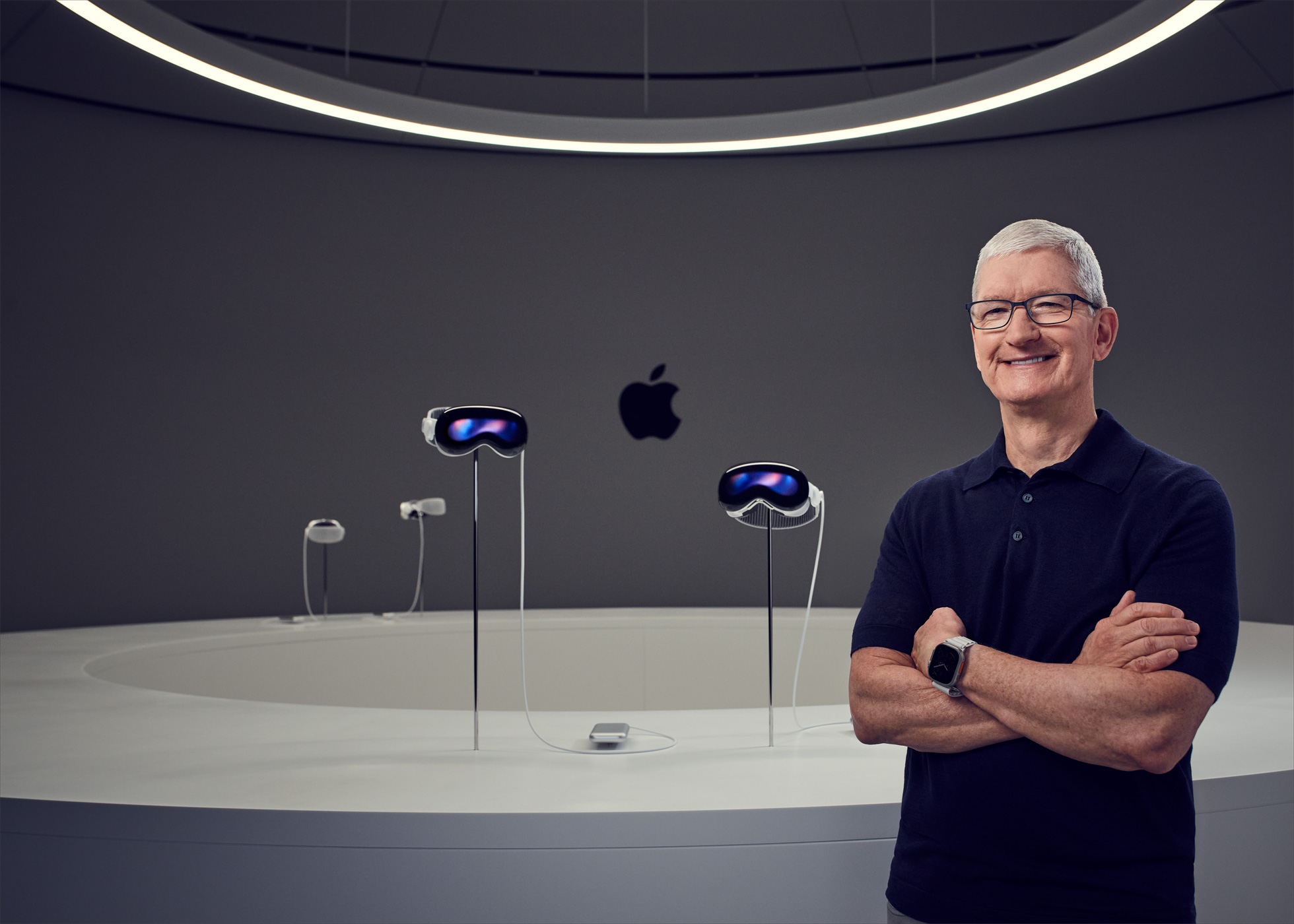Laptop Mag Verdict
The iPhone 13 Pro Max delivers on its promises of power, endurance and a feature-rich experience in a premium shell that costs a pretty penny.
Pros
- +
Beautiful, premium chassis
- +
Excellent performance
- +
Great battery life
- +
Gorgeous display with 120Hz refresh rate
- +
Stellar cameras
Cons
- -
Really expensive no matter the config
Why you can trust Laptop Mag
Price: $1,399
OS: iOS 15
Display: 6.7-inch Super Retina XDR with ProMotio
CPU: A15 Bionic chip
RAM: 6GB
Rear cameras: 12MP wide ( f/1.5); 12MP ultra-wide (f/1.8 ) 12MP telephoto (ƒ/2.8)
Front camera: 12 MP (f/2.2)
Storage: 512GB
Battery: 12:16
Size: 6.3 x 3.1 x 0.3 inches
Weight: 8.5 ounces
So it’s come to this. Me, a proud Android owner, reviewing an iPhone. And not just any iPhone, the Apple iPhone 13 Pro Max. The big daddy of Apple’s latest line of super phones. And I say super phone, because this bad boy is taking on challengers and tossing them aside like so much rubbish thanks to its super powerful A15 Bionic processor. Not only is it more powerful than most smartphones on the market, it’s got great battery life and a host of new features that will make even Android lovers like me stand up and pay attention.
Apple’s finally joined the 120Hz party with its new adaptable display, plus its running iOS 15 which boasts improved features and plenty of new tricks. But the siren call for the iPhone fanatics will undoubtedly be the cameras which offer higher apertures, better sensors and fun new hallmarks like Macro and Cinematic Mode.
But all this power and prestige doesn’t come cheap. The cost of entry is $1,099, but you’ll pay out the nose for storage to the tune of $1,399 for the 512GB of storage my review unit carries. So is this the story of how an Android devotee defected to the Apple side? No, but I definitely have an understanding of what makes this phone in particular oh so appealing, so much so that it’s the latest member of our best smartphones page, and so will you.

Apple iPhone 13 Pro Max pricing and configurations
A premium device demands a matching budget. Apple was gracious enough to send me the $1,399 configuration which has the company’s A15 Bionic processor with 6GB of RAM and 512GB of storage. The base model costs $1,099 and drops the storage down to 128GB. The 256GB model is priced at $1,199 while the 1TB is $1,599.
All in all, each configuration costs as much as a mid-tier laptop.
Apple iPhone 13 Pro Max design
I’ve got to admit, Apple knows how to make an absolutely gorgeous smartphone. As soon as I took it out of its box, I was smitten with the iPhone 13 Pro Max. How could I not be? Clad in glass and stainless steel, the phone is colored a breathtaking shade Apple calls Sierra Blue.
The light blue metal siding gleams in the light although it’s a fingerprint magnet. It’s got the familiar matte notches along the corners which is a nice accent. Along the right side of the phone, sits the Sidebutton. On the left, is the ring/silent switch with two more buttons for volume and a SIM card slot. Perusing the bottom of the phone, you’ll see the Lightning port and integrated microphones and speakers.
The glass grayish-blue back has a matte finish that cuts down on fingerprints slightly, but really plays up the glossy half-eaten fruit icon. In the top-left corner is Apple’s famed tri-camera sensor in a slightly raised rounded square nodule. Now if blue in any of its shades isn’t for you, the 13 Pro Max is also available in Graphite, Gold or Silver.

Flipping the phone over, I took a long appreciative glance at the 6.7-inch Ceramic Shield display. As a Samsung Galaxy Note 20 Ultra owner, the bezels on the 13 Pro Max are a bit thick for me. That’s not to say they’re particularly fat, but with Samsung’s near-bezeless Infinity-O display, everything looks a bit chunky. Plus, there’s that massive top notch housing the 12-megapixel camera with another built-in set of microphone and speakers.
A word on that top notch. Yes, I realize that they made it somewhat smaller, but it’s still a glaring eyesore on what’s otherwise a lovely display.
Overall, the iPhone 13 Pro Max is a comely piece of tech. Which is why although I was grateful that Apple was thoughtful enough to include a stately black leather cover, I felt a bit of anguish hiding all that pretty. But as someone who just had to get a replacement phone thanks to a severely cracked screen, I understand.

In case you want to roll the dice and throw caution to the wind and go caseless, Apple claims that its proprietary dual-ion exchange process treated glass on the back coupled with the Ceramic Shield on the front, makes it one of if not the toughest phone on the market. (Check out what Allstate has to say about the iPhone 13’s durability) Plus, it has an IP68 rating for water resistance. But, I’d highly recommend checking out our best iPhone 13 cases page.
As pretty as the stainless steel is, that and all the components make for a heavy phone. Not that I mind, I like a substantial feeling phone. The 13 Pro Max’s 6.3 x 3.1 x 0.3-inch frame weighs 8.5 ounces. The Note 20 Ultra (6.5 x 3 x 0.32 inches) is noticeably lighter at 7.3 ounces. The Samsung Galaxy S21 Ultra outweighs them both at 8.07 ounces, 6.5 x 3 x 0.35 inches.
Apple iPhone 13 Pro Max display
Well thanks to the Ceramic Shield, we know that the iPhone 13 Pro Max’s display is tough, but is it pretty? The answer is an emphatic yes –– if you prefer whatever you’re looking at to have a more natural hue. This marks one of the first iPhones to sport Apple’s Super Retina XDR with ProMotion. That’s Apple’s name for its 120Hz adaptive display, joining a number of ultra-premium phones.
However, there’s always a twist with Apple as ProMotion can dynamically adjust the refresh rate between 10 and 120Hz. So when you’re reading a book or a webpage, ProMotion will drop to a lower refresh rate compared to when you’re playing a game like Genshin Impact. The lower rate is a battery saving measure that many iPhone owners will appreciate. No matter the instance, I never noticed any stuttering or slow down. Only the Galaxy S21 Ultra in the Android world matches Apple’s ProMotion exactly.
Watching the latest trailer for the upcoming Netflix movie “The Harder They Fall” on the 6.7-inch, 2778 x 1284 panel side-by-side with the Note 20 Ultra (6.9 inches, 3088 x 1440) brought some things to light. The first thing is keep TrueTone on. Another piece of proprietary tech, True Tone automatically adjusts the screen’s white balance based on the environment’s lighting situation. It allowed the 13 Pro Max to at least stay within spitting distance of the Note 20 Ultra in terms of color.

A spurt of blood exploding out the back of a hapless outlaw almost matches the Samsung. And while I know that the Note’s Super AMOLED display is oversaturated, I can’t help but prefer the ruddier coloring of the man’s skin tone on the Note compared to the more natural presentation of the iPhone. And while I originally thought the iPhone’s smaller screen would give it the advantage when it came to sharpness, details like the knots in the wooden slats of the building were a hint clearer. That’s in large part to the PPI (pixels per inch). The iPhone 13 Pro Max has a 458 PPI while the Note 20 Ultra hit 496 PPI.
Just to make sure my eyes weren’t playing tricks on me, I went to the numbers. The iPhone 13 Pro Max reproduced 77% of the DCI-P3 color gamut, missing the 97% smartphone average. The S21 Ultra is more vivid at 81.4%, but the Note 20 Ultra is the most lurid at a ridiculous 143%.
When we tested for color accuracy, the iPhone hit 0.21 (closer to zero is better), which is better than the 0.24 posted by the Note and the category average. The S21 Ultra was the worst at 0.35.
During the brightness test, the 13 Pro Max averaged 837 nits, living up to Apple’s claim that this is its brightest display to date. The iPhone had no problem outshining the 573-nit average as well as the S21 Ultra (821 nits) and the Note Ultra (663 nits).
Apple iPhone 13 Pro Max audio
Some of these laptop makers might want to talk to Apple about how to make their speakers sound better. The built-in speakers on the iPhone 13 Pro Max are loud, having no problem filling my downstairs office, filtering upstairs via the spiral staircase. The speakers also produced clean audio with balanced highs, mids and lows.
When I listened to Aint Afraid’s “I Got God,” I was met with crisp snares, dynamic strings and warm vocals. I did hear a bit of muddiness with the reverb at max volume, however. Listening to the same track on my Note 20 Ultra, I got a softer reverb effect, but it definitely wasn’t as loud as the iPhone.
If you want some complementary earbuds or headphones, I’d recommend either the AirPods Pro or the AirPods Max. But if those don’t suit your fancy, check out our best wireless headphones and best wireless earbuds pages.
Apple iPhone 13 Pro Max performance
So this section is dedicated to the ludicrously powered A15 Bionic processor. Apple could have really stuck with the A14 and still be the most powerful phone on the market. But kudos to the overachievers. The iPhone 13 Pro Max firing on all cylinders with its 6-core CPU. Two of the cores are designated performance and the remaining four are efficiency. The 5-nanometer chip has 15 billion transistors on deck ready to launch and run whatever your little heart desires. It also has a 16-core Neural Engine which really comes in handy with the machine-learning apps, AI and of course the cameras and all those new modes (more on that later).
And let’s be clear, I tried to tax this thing and its 6GB of RAM, but couldn’t manage to slow it down. I launched Yelp, Spotify, Google Docs, TweetDeck, Netflix, Instagram, Genshin Impact and about 20 tabs in Google Chrome. There was nary a hint of latency. At this point, I’m wondering what it will take to cause a stutter.
Now it’s time to get into the nitty gritty, our benchmark tests. Starting with Geekbench 5, the iPhone 13 Pro Max produced 4,549, destroying the 3,131 smartphone average. Powered by a Qualcomm Snapdragon 865+ CPU, the Note 20 Ultra got 3,294 while the S21 Ultra with its Snapdragon 888 processor reached 3,440.

The A15 Bionic chip also has a 5-core GPU which Apple claims is faster than 50% of the competition. That should come in handy for both gaming and photography. The action got hot and heavy as I slashed, shot and blasted my way through Genshin Impact, complete with big red-orange plumes from my fire elemental magic hitting the unfortunate enemies in my path.
When we ran the 3DMark Slingshot Extreme test (Unlimited OpenGL ES 3.1), which is one of the more demanding graphics tests we run, the iPhone 13 Pro Max obtained 6,804, sailing past the 5,713 average. However, the Galaxy S21 Ultra achieved 8,593 while the Note 20 Ultra got 7,728.
However, the 13 Pro Max dominated on the Adobe Premiere Rush video editing test, taking only 0:25 to tear through the phone converting a 4K video to 1080p. The 1:22 category average, Note (1:16) and S21 Ultra (1:03) never had a chance.

Apple iPhone 13 Pro Max battery life and charging
Not only does the A15 Bionic chip give the iPhone a ridiculous amount of power for multitasking, gaming and photography, thanks to those four efficiency cores, it’s giving the battery life a bit of a boost. The iPhone 13 Pro Max lasted 12 hours and 16 minutes on the Laptop Mag Battery Test, which consists of continuous web surfing over T-Mobile’s 5G network at 150 nits of brightness. It smoked the 10:07 smartphone average as well as the Galaxy S21 Ultra (11:25) and Note 20 Ultra (10:38).
Unfortunately, due to Apple’s love of the Lightning port, the 13 Pro Max doesn’t support quick charging. However, this is the only iPhone that can give you 27W of wired charging, But not so fast! There’s a caveat. This only happens when the phone is below a certain threshold, from there it switches over to 20W like its other counterparts. That’s compared to 25W for the Note and S21 Ultra. Apple claims the iPhone will gain a 50% charge in 35 minutes.
During our charge test, we saw the iPhone reach 19% in 15 minutes and 40% in 30 minutes.
Compare that to the Note which reached 30% after 15 minutes and 56% in 30 minutes. The S21 Ultra was pretty close to the Note at 31% in 15 minutes and 56% in 30 minutes.
Apple 13 iPhone Pro Max cameras
But here’s the main reason you should consider getting the iPhone 13 Pro Max –– the cameras. The 13 Pro Max is bringing a host of improvements to what was already a stellar experience. Dubbed the Pro Camera system, it consists of retooled Wide, UltraWide and Telephoto sensors. You get the 12MP wide-angle primary sensor that now offers an incredible f/1.5 aperture and bigger 1.9um pixels which improve the low-light performance. The 12MP ultra-wide also leveled up with a f/1.8 aperture while the 12MP telephoto extends to a 3x optical zoom from 2x, but at the cost of the aperture which falls to f/2.8 from f/2.0.
But the whole picture isn’t complete without the A15 Bionic CPU (yes, again). The wonder chip brings a new ISP (image signalling processor) along with its ample machine learning and AI improvements that are tasked with enhancing both computational photography and videography.
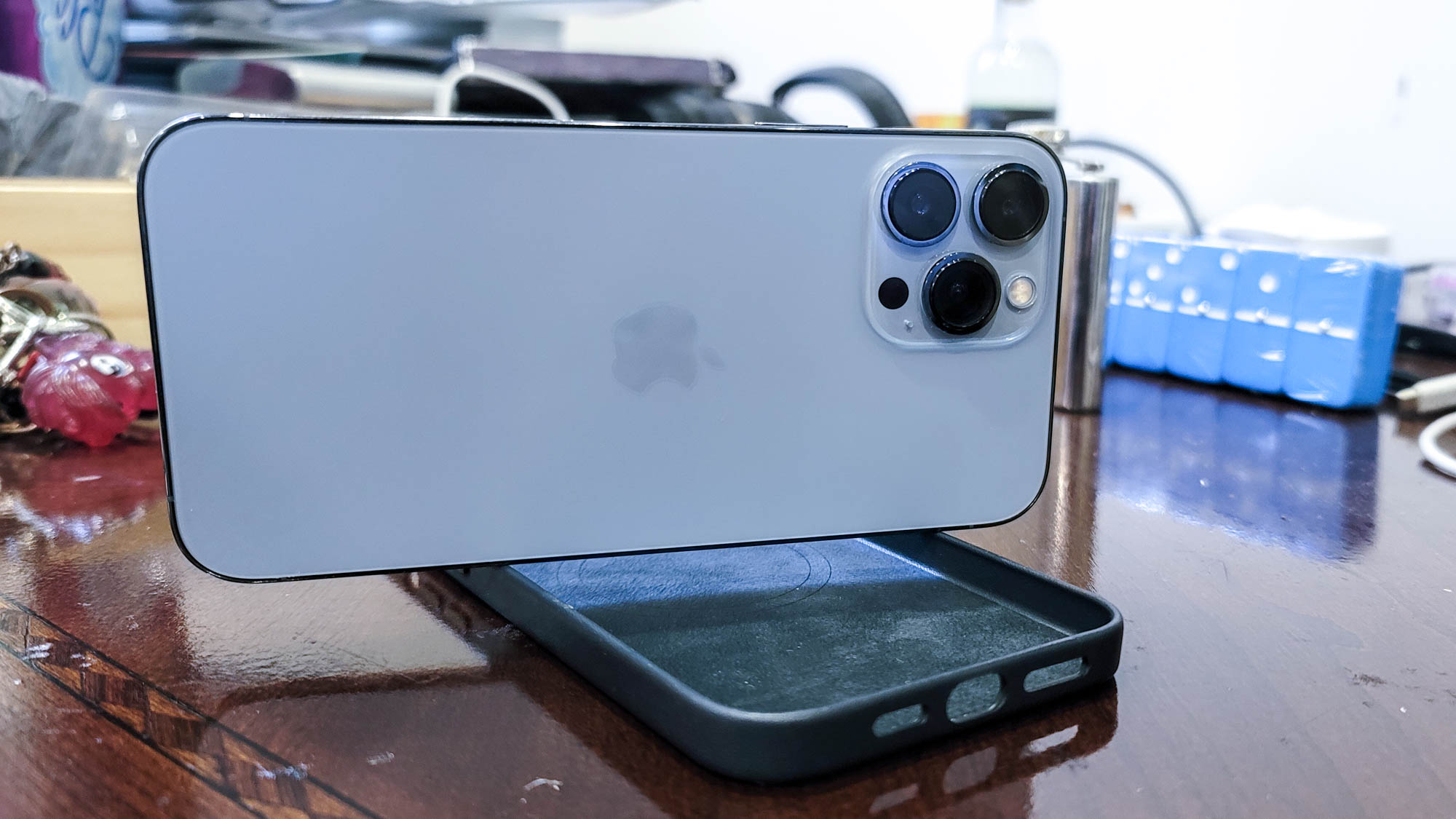
All of that opens up the way to several new photo modes that are going to have competing phone makers scrambling. First up, is the much-lauded Cinematic Mode. As the name suggests, this is all about making near-movie-quality video by allowing you to capture shifting depth of field. It’s a cool trick that will go over well with aspiring filmmakers and TikTokers alike.

Photographics Styles: Standard

Photographic Styles: Rich Vibrant

Photographic Styles: Vibrant
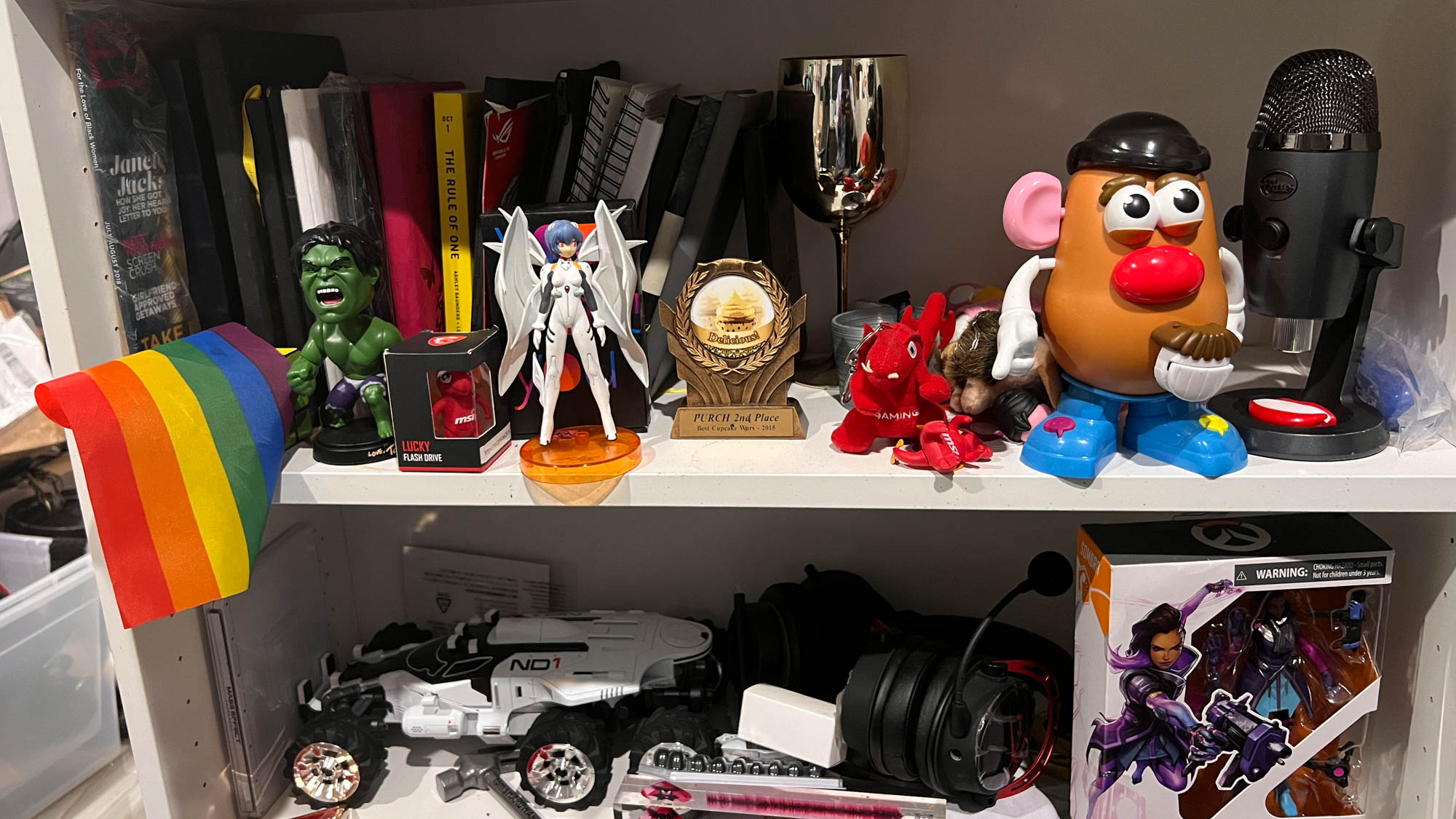
Photographic Style: Warm

Photographic Styles: Cool
For amateur and professional photographers seeking to get granular, there’s Photographic Styles. This feature gives you tone and warm settings to play with to tweak the iPhone camera output to your liking. It comes with five default styles (Standard, Rich Contrast, Vibrant, Warm and Cool), however you can adjust any of the modes in the manner in which you see fit. From there, the camera will default to whatever settings you configured.
Interested in getting up close and personal with your subject? Sounds like the new Macro mode is just what the doctor ordered. Using the ultra-wide lens, you can capture some cool close up images. However, I wish Apple let you control it more. At present, it launches automatically when the 13 Pro Max picks up that you’re close enough to the subject. This has resulted in some janky images that I wasn’t impressed by.

Wide-angle camera shots

Wide-angle camera shots

Wide-angle camera shots
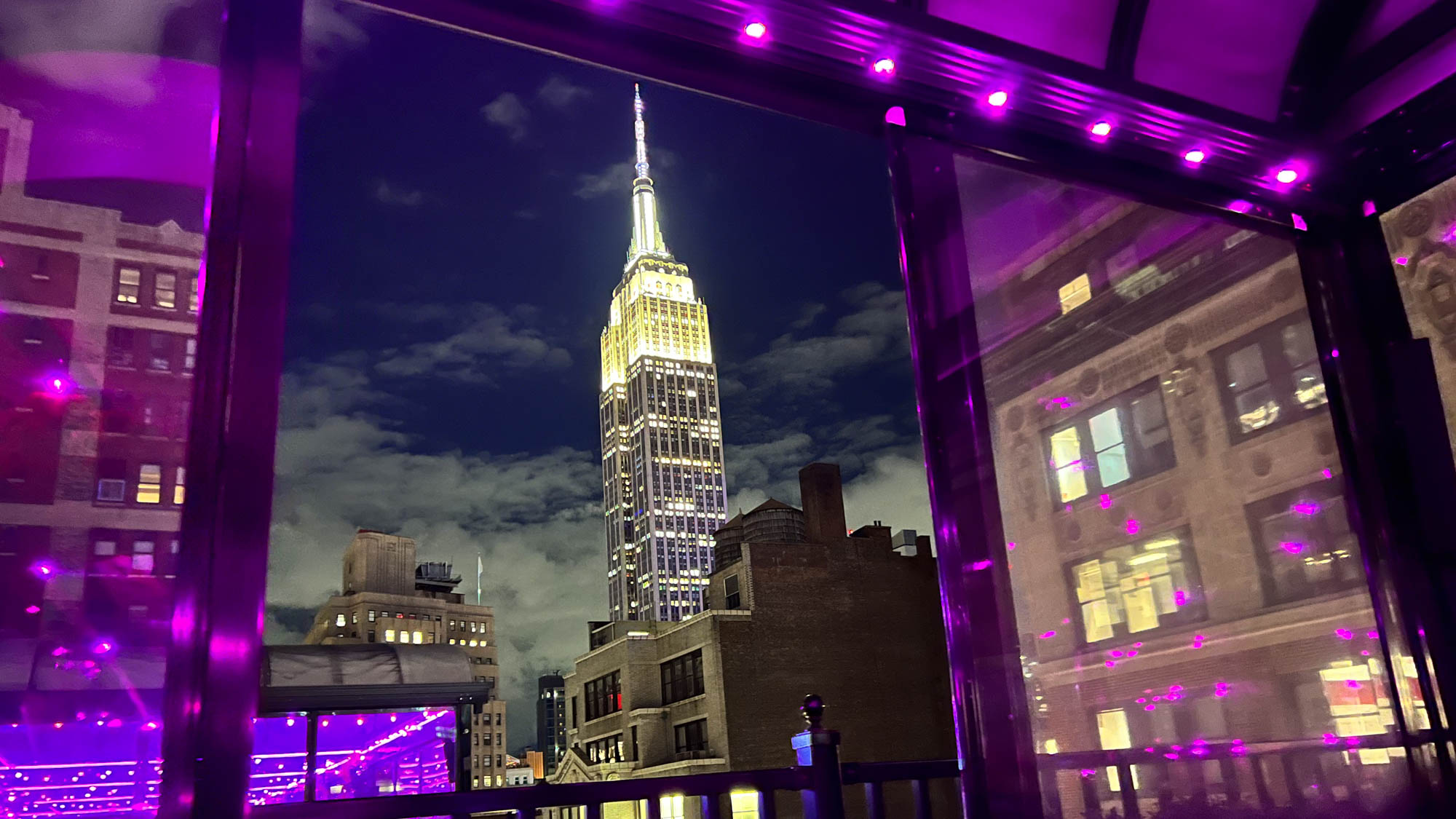
Wide-angle camera shots
Wide-angle camera
This is arguably my favorite of the bunch. Whether it was natural lighting or low lighting, the f/1.5 aperture didn’t fail with producing a pretty picture. I took a smattering of shots including some at a press event where the lighting was pretty low. The first shot was of a couple of the shelves of my geeky bookcase in my office. I was really impressed with how much detail the camera captured using the overhead lighting. From Tigra’s plasticky abs to the crevices of the rock Cap’s standing on, the camera captured every single detail. You can even read the text of the various book titles and my awards. The color was spot on with the bright white bookshelves, the bright red dragon and Ryu’s whitish-gray gi.
My second shot is of a dainty drink at a rooftop party I attended. In a naturally lit situation, the camera did a great job capturing the delicate striations on the petals of the flower floating in the drink. It even caught the bubbles from the champagne-infused liquid gathering around one of the petals. The rose color of the drink provided a great contrast to the magenta flower.
I took a few lowlight shots, one was a stunning pic of the Empire State building. The LED lighting on the building’s spire looked a bit blown out, but I was really surprised at how well it captured the clouds and the building’s many windows. And the purple lights in the bar weren’t too shabby either. I tried reproducing the shot on my Note 20 Ultra, and while it came close, there was most certainly no cigar. Extra credit points go to the iPhone because I actually captured this shot while on a rotating carousel.

Ultra-wide camera
Like I previously mentioned, the ultra-wide got a bigger aperture boost than the wide-angle. With a f/1.8 aperture, it’s now on a par with many flagship Android phones’ primary sensors. This will come into play the most when you want those sweet night shots. Speaking of night, you can now access night mode on the ultra-wide sensor instead of it being only a primary sensor feature. I took a shot of the impending sundown on a Brooklyn street. It did a great job capturing the spectrum of color, particularly the orange-pinkish hue painting the clouds.
I also took Macro mode for a test spin. It’s a bit jarring to use as it kicks in automatically when the phone detects you’re getting close to an object. There’s a weird transition as the mode kicks in, that kind of looks like you hit pause on a video for a second. Still, I was impressed with my shot of a purple flower and the little particles of debris on its petals.

Telephoto camera shots

Telephoto camera shots

Telephoto camera shots


Telephoto camera shots
Telephoto camera
Telephoto is a bit hit or miss. Don’t get it twisted, I got some great shots, particularly of my wall of headphones. It delivered great detail, capturing the fine creases of the faux-alligator skin pattern of my red Parrot 3 headphones. The problem actually lies with the digital zoom, the 3x optical zoom, in particular. It just falls short of the mark especially when pitted against my Note 20 Ultra that can go to a 50x zoom (which starts to fall apart at about the 20x mark, but it’s the principle of the thing) The 3x optical zoom on the 13 Pro Max is equivalent to a 77mm lens.
As soon as I selected the 3x zoom to capture an image of what looked to be a rotting apple on a tree, the detail started getting blurry. And when I increased it to the full 15x, things started getting downright splotchy.

front camera shots
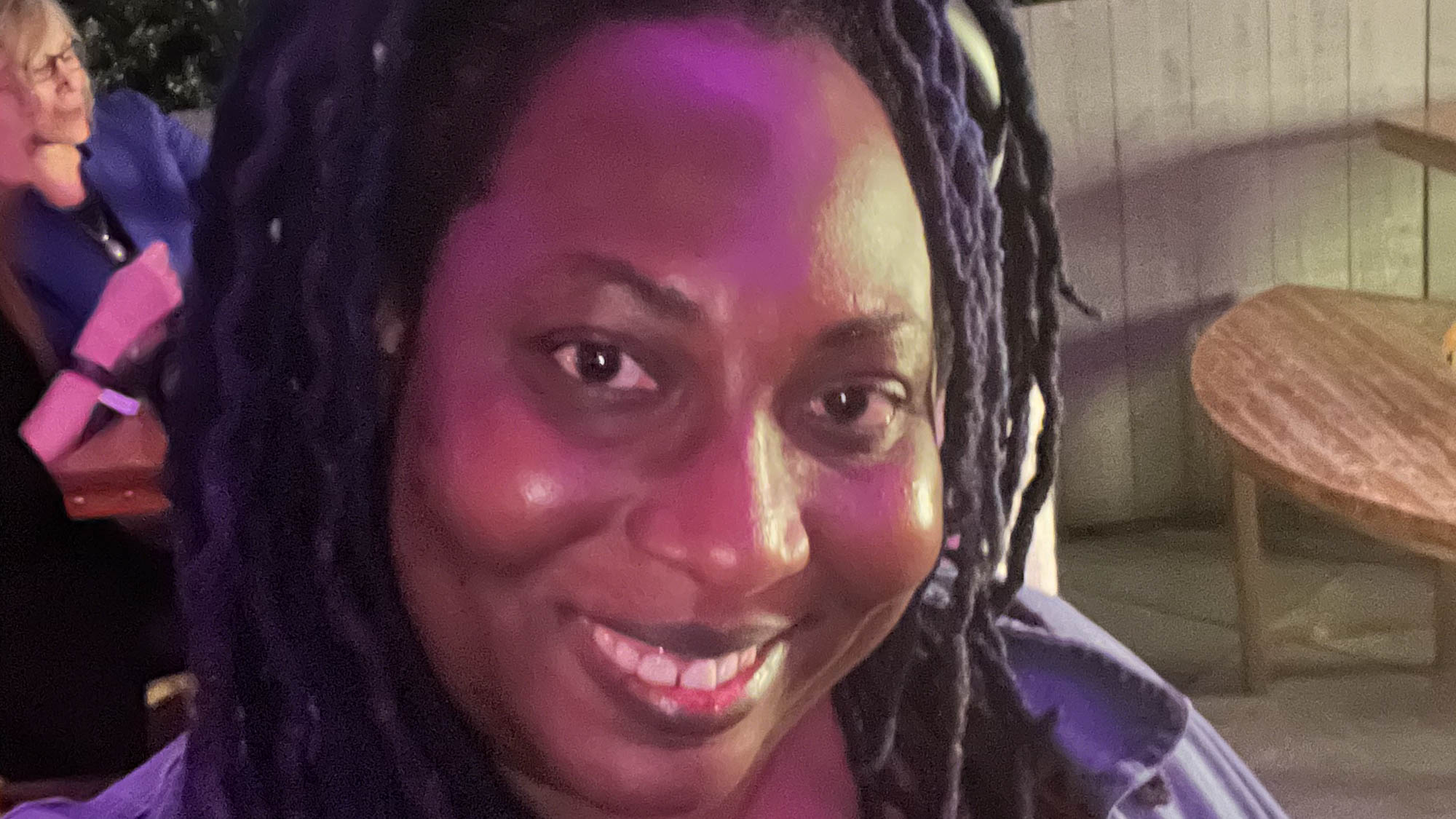
front camera shots
Front camera
Apple didn’t make any changes to the 12MP front camera, nor did it have to as it delivers plenty of details. My handsome friend took the camera for a spin and it did not disappoint capturing the fine details in his houndstooth pageboy hat as well as the fine hairs in his salt and pepper beard. And the bokeh is great as well.
I was also pleased with my nighttime selfie as it didn’t wash out my complexion and captured some of the creases and stitching in my denim jacket.
Apple iPhone 13 Pro Max software and warranty
Whether it's a smartphone or a laptop, without the software, it’s just a paperweight. The iPhone 13 Pro Max runs on the recently released iOS 15. And like most new operating systems, iOS 15 comes with several updates that bring improvements to Safari, Apple Maps, FaceTime and notifications just to name a few.
Let’s kick things off with FaceTime. The most lauded feature is FaceTime’s new ability to connect with Android owners which lets you send a link to start video chatting. Speaking of video chats and conferences, FaceTime adds a background blurring effect so you can be front and center in the shot. The next cool feature has yet to debut, but is rolling out soon. Screen sharing lets companionship-starved people get together and watch movies or shows on their favorite streaming platform which comes in handy while we’re still working through this pandemic.
Now onto Shared With You. If you’ve ever tried to scour through the mountains of content in your phone, looking from that one particular thing from that one particular person, Shared With You is right up your alley. The feature eliminates all that frustration by going through your content (photos, music, Apple TV and Apple Podcasts) sent by your contacts. Shared With You also works with Apple News allowing you to quickly pinpoint articles sent by friends and family.
iOS 15 also brings Live Text. Similar to Samsung’s Extract Text feature on the Note, the feature can parse out text in images, letting you copy and paste, search or translate. It’s happened to the best of us. We’re working on something important, we stop and pick up our phones to look at the time and before you know it you’re watching your tenth TIkTok video. To cut down on those moments, iOS 15 brings the new Focus feature which helps your productivity by filtering which apps and texts you can access.

The Find My feature has gotten a nice boost, which is good because it’s inevitable that you’ll leave your phone behind somewhere. When it happens, iOS 15 will send a notification to another Apple device like the Apple Watch Series 7 or the iPad Pro and give its location on a map. It’s an awesome Find My feature that is super useful during those absentminded moments we all inevitably experience.
Those concerned about privacy will appreciate the new Mail Privacy Protection feature that conceals your IP address and your location from senders. It also keeps nosy Nancies from seeing when and if you opened their email. App Privacy Report is another handy feature that lets you see how often apps have accessed your data (i.g. location and photos) as well as see if said apps are contacting other domains. For Apple ID fans there’s Account Recovery Contacts which Apple says will make resetting your password and accessing your account easier than ever. And thanks to the Digital Legacy program, you can choose people as Legacy Contacts so they can access your account if anything ever happens to you.
Other improvements include redesigned Notifications which now have photos for your contacts with larger, easier to identify icons. Memories has also gotten an overhaul boasting a more personalized experience with an interactive interface.
Bottom Line
I like big phones, and I can not lie. If I wasn’t so Team Android, the iPhone 13 Pro Max would probably be my smartphone of choice. It’s overpowered and gorgeous as hell, which is just my style. And since I’m a content hoarder, I’d seriously consider the $1,599 model that I reviewed. Should you? No, you can probably get away with 256 or 512GB of storage. And just to take things further, a great many of you probably don’t need the iPhone 13 Pro Max –– you’d be just fine with the iPhone 13 Pro or even the iPhone 13.
Before you do a double take, I said what I said. The iPhone 13 Pro Max kicked ass on just about every test we threw at it. It’s a multitasking/gaming/photography machine without question. And it lasted over 12 hours on our battery test. But the like the Samsung Galaxy Note 20 Ultra, the iPhone Pro Max 13 is really for heavy duty users, not those of us who are just watching videos, trawling social media, reading books and texting,
So who do I recommend the iPhone 13 Pro Max to? Content creators, with a focus on photographers and videographers who maybe can’t afford something like the BlackMagic Pocket Cinema 6K camera. It’s also for people like me who love opulence, power and endurance and the iPhone Pro Max 13 has that in spades.

Sherri L. Smith has been cranking out product reviews for Laptopmag.com since 2011. In that time, she's reviewed more than her share of laptops, tablets, smartphones and everything in between. The resident gamer and audio junkie, Sherri was previously a managing editor for Black Web 2.0 and contributed to BET.Com and Popgadget.

